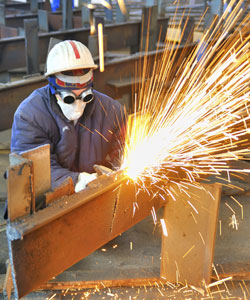Construction Fire Safety
Construction Fire Safety
Construction site fire safety is everyone's responsibility!
Larger construction projects – those greater than two storeys or more than 600 square meters – have specific fire safety considerations.
If you are working on a project:
- Review the Occupational Health & Safety Act (OHSA) which outlines construction safety rules for buildings under construction.
- Consider whether current minimum measures are enough to protect lives, the property and your business reputation in the event of an emergency
- Consider protecting your development project by implementing a proactive risk management program.
- Implement a fire safety program to help manage the risk of fire while your project is under construction.
What your program should include
- A fire safety work plan
- Adequate water supply
- Site supervision
- No smoking policy
- A hot-work permit system
- Closed flame heating appliances
- A plan to limit exposed combustible construction
Portable fire extinguisher
Make sure all on-site construction staff are trained in the use of portable fire extinguishers. Teach the PASS method:
Pull out the safety pin
Aim at base of the fire
Squeeze the trigger
Sweep at the base of the fire
Portable fire extinguishers should be installed in visible and accessible areas at all times throughout the project.
Five leading causes of construction-site fires
- Incendiary or suspicious
- Smoking
- Open flames
- Embers
- Heating equipment
Revaluate your fire plan regularly
Assess the risk:
- Where are fires most likely to occur on your site?
- Are your employees trained in fire safety?
- Are there ample means of egress?
Do your housekeeping
- Is your work site clean and tidy?
- Are your exits clearly identified?
- Are egress routes well illuminated and free of obstructions?
Implement a clean floor policy
Materials, scrap and combustible waste should be stored as far as possible from the construction building. Dumpsters should be located a minimum of 15 metres from buildings
Properly locate office and temporary buildings
Office and temporary buildings should be located a minimum of 10 metres from non-combustible projects and 20 metres from combustible projects.
Ensure fire department access
- Ensure an emergency access route is available 24 hours a day and can accommodate all types of emergency response vehicles.
- Assess your exposure protection to project regularly
Secure your site
- Erect perimeter fencing and provide a controlled access point with sign-in/out procedure.
- Employ a security service to protect the premises after hours.
- Install perimeter lighting and security cameras.
Manage the risk
- Appoint a site fire manager
- Conduct daily inspection
- Designation of duties/responsibilities person
Your plan should include:
- Designated site organization and supervisory plans
- Emergency procedures – including how to sound the alarm and notify emergency services
- Methods for controlling fire hazards in and around building
- Maintenance plans for fire and life safety equipment
- A plan to train site staff on the evacuation plan
- An emergency evacuation drill
Training
Implement and test your plans regularly.
Contact Kingston Fire & Rescue to assist with pre-emergency planning.
Additional fire safety information for construction projects can be found in the following resources:
- National Building Code
- National Fire Code
- National Fire Protection Association - Standard for Safeguarding Construction, Alteration, and Demolition Operations

